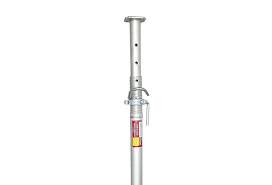Sep . 07, 2024 13:03 Back to list
Innovative Falsework Solutions for Construction Projects
The Importance of Falsework in Construction
In the realm of construction, one of the unsung heroes that plays a pivotal role in ensuring safety and structural integrity is falsework. Falsework refers to temporary structures used to support a building or other large constructions during the process of construction, particularly when the permanent supporting elements are not yet in place. This technique, essential in various forms of construction, has a rich history and continues to evolve with advancements in engineering and materials.
The primary purpose of falsework is to provide temporary support for formwork and other elements, allowing workers to erect structures with precision and confidence. By redistributing loads safely until the final structure can bear its own weight, falsework minimizes the risk of collapse during critical phases of construction. This function is particularly crucial in large scale projects like bridges, high-rise buildings, and complex architectural creations where weight distribution and stability must be meticulously calculated.
Over the years, the design and materials used in falsework have undergone significant advancements. Traditional falsework often relied on wood and steel, but now a plethora of materials is utilized to enhance strength and reduce weight. Modern falsework systems incorporate aluminum, fiber-reinforced polymers, and other innovative composites that allow for quicker assembly and disassembly while maintaining safety and structural demands. These advancements not only improve efficiency in construction timelines but also enhance the overall safety of the work environment.
falsework

Another key aspect of falsework is its adaptability. Construction sites often vary greatly in size, shape, and the specific requirements of each project. Falsework can be customized to meet these diverse needs, whether supporting a curved bridge deck, a soaring skyscraper, or an intricate architectural feature. This flexibility allows engineers and contractors to optimize their approaches, employing falsework in ways that enhance both structural performance and resource management.
Safety, however, remains the utmost priority in the implementation of falsework systems. Rigorous standards and regulations govern the design, material selection, and load limits of falsework to prevent accidents. Regular inspections and maintenance are mandated to ensure that the structure remains stable throughout the duration of its use. Training workers in the safe assembly and disassembly of falsework is equally crucial, as improper handling can lead to dangerous situations.
In an era where construction projects are increasingly complex and demanding, the role of falsework is more vital than ever. It serves not only as a means of temporary support but also as a foundation for innovation in construction techniques. With the growth of technology, emerging methods such as 3D printing and automated construction systems are beginning to intersect with traditional falsework practices, heralding a new era of efficiency and safety in the industry.
In conclusion, falsework is a cornerstone of contemporary construction practices. Its significance cannot be understated, as it ensures safety, promotes efficiency, and supports innovative architectural designs. As the construction industry continues to evolve, so too will the systems and practices surrounding falsework, paving the way for safer and more ambitious builds in the future. Understanding and appreciating its role is essential for anyone involved in the construction process, from engineers to laborers. By investing in robust falsework designs, the industry can not only meet the increasing demands of the modern world but also set a foundation for future advancements.
-
Adjustable Heavy Duty Props for Slab Formwork | Strong & Reliable Support
NewsAug.23,2025
-
Adjustable Heavy Duty Props for Slab Formwork - Strong & Safe Support
NewsAug.22,2025
-
Formwork Spring Clamp Factories: Quality & Bulk Supply
NewsAug.21,2025
-
Premium Ringlock Scaffolding | China Manufacturer & Supplier
NewsAug.19,2025
-
Efficient Table Formwork for Fast Slab Construction & Reusability
NewsAug.18,2025
-
Timber Beam H20 Formwork & Shuttering - Durable & Reliable
NewsAug.17,2025